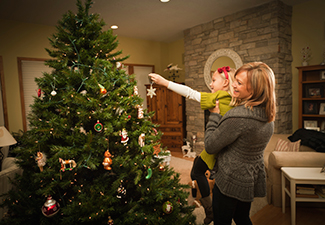
For many, bringing a fresh Christmas tree into the house signals the season of holidays. But when the tree goes up, some people start to experience allergic-like symptoms and may worry that the tree is at fault.
Is there such thing as a Christmas tree allergy? The answer is complex and a number of things could be to blame:
Mold allergy – Research has found that Christmas trees carry many varieties of naturally occurring mold on their needles, branches, and trunk. About 10% of people have an allergy to one of these molds. As the tree is brought into the warm, indoor environment, the molds proliferate and people’s exposure increases enough to give them noticeable symptoms.
Irritant rhinitis – A common condition that mimics allergy is vasomotor rhinitis (or “irritant rhinitis”). It is often triggered by strong smells and classically presents as fits of sneezing followed by nasal congestion and a drippy, watery discharge. A fragrant Christmas tree could set off such symptoms in a sensitive individual.
Viruses – While not related to the Christmas tree, December is, of course, viral season and sometimes an infection’s start coincidentally times itself with the arrival of the tree.
Allergy to the tree – While this might seem the most logical, it is probably the least likely. Tree allergy is almost always due to pollen being released in their proper season. Very few trees, if any, are releasing pollen in December. Further, when tested, very few people are known to be allergic to tree pollens from common Christmas trees (fir, spruce, pine, hemlock).
If you’re having allergic symptoms—coughing, sneezing, runny nose or itchy, watery eyes—this holiday season, talk to your allergist.
 (541) 233-4064
(541) 233-4064 
